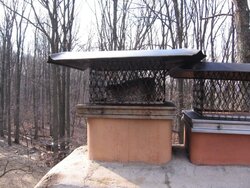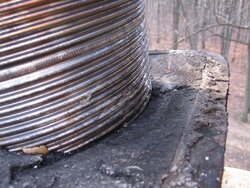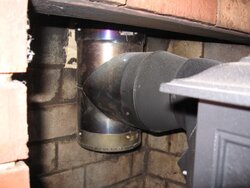I currently have my Oslo hooked up to a pre existing insulated ss liner. The liner is about 25' and 8". I am considering switching to the recommended 6" liner for better stove performance. My current liner is 3 years old and seems to be cemented in. Rather than breaking this up and ripping the 8" insulated liner out, can I just drop an uninsulated 6" liner down inside it? liner goes down to a tee, then rear vented to the Oslo. Any thoughts and ideas would be appreciated.
A quick footnote. I'm not exactly Bob Villa in the DYI area if you know what I mean.
How easy or difficult of a job is this?
A quick footnote. I'm not exactly Bob Villa in the DYI area if you know what I mean.
How easy or difficult of a job is this?




